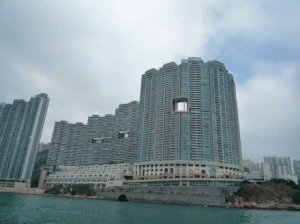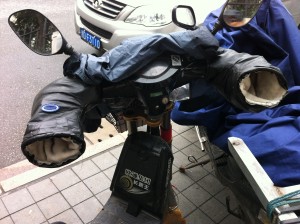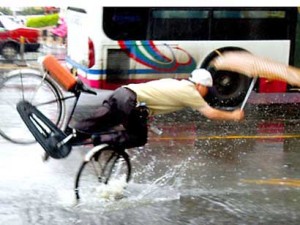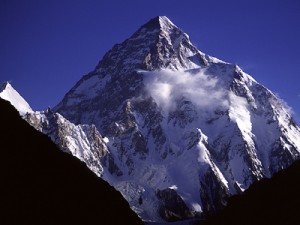First impressions of Hong Kong
As I mentioned the other day, I was recently in Hong Kong. It was my first visit (not counting various transits through the airport) so I thought I’d share some first impressions.
The first thing you notice is that it’s growing. You notice this first as you land at the airport as it is on reclaimed land. Over the years I have heard many stories about the old airport, where on final approach you could make eye contact with the old ladies hanging their washing outside their high rise apartments. I’d like to have experienced that. Maybe just once. It’s certainly not just the airport that’s on new land- along many bits of the shoreline you can see how building work is expanding the space available. For example, the Royal Yacht Club was once on an island but now forms part of a large peninsula. I wonder when they will stop.
That said, there’s still a lot of water. In fact the Bay completely dominates the city. And just like other cities dominated by water, it is fairly laid back. People work long hours, but the vibe of the place is a lot closer to Sydney than New York. Maybe it’s also the weather – maybe you need some real cold to generate real uptightness.
One area that was particularly laid back was Lamma Island. We took a ferry from downtown and 20 minutes later we were on the island – which was a world away – full of organic veg and people on bicycles. I bet the Birkenstock index is through the roof there too. Actually I love the fact that it’s a major international city with seven or so million people packed in, mostly vertically, but take a ferry for 20 minutes, or take a short drive out of town and it gets jungle-y really quickly, complete with monkeys and a completely different atmosphere.
I’ve heard it is slowly diminishing but you really can still and feel the English influence. It’s mostly in little things – buildings have a ground floor, there are many places to have afternoon tea and people queue (that’s probably the weirdest part – people wait for others to get off a train before piling on and the queue for Starbucks was an actual, organised LINE!). Most people speak English – even the taxi drivers – hallelujah! People drive on the left in right hand drive cars and the plugs are the three point UK ones. However one thing that stands out in its distinct un-Englishness is the public transport system which seems to be extremely efficient.
One thing I didn’t experience is the local favourite pastime which appears to be shopping. Everyone seems to go mad for it. There are many, many, many shops – an interesting mixture of European, Asian, Austrialian and US brands. Even Marks and Spencers! I didn’t check if they carried anything larger than a SMALL not least of all because I was at least twice the size of anyone I saw shopping and it’s never good to feel like a heffalump. It’s so much easier to shop in the US where heffalumps are far more common 😉
All that shopping stimulates the appetite though, which explains the second favourite pastime of locals – which is eating. There are soooo many places to eat and the ones I tries were really rather good. We managed to sample a real cross section from a mad Chinese diner where we had breakfast to a really rather chi-chi international restaurant where we had one of the most beautifully presented meals I’ve ever had.
So now I understand why everybody goes to Hong Kong to shop, but actually it’s a great city to just hang out it. It’s not as packed with “must see” locations as for example, London, but it’s still a great place. I’m sure I’ll be back.
Built in mittens and gaffer tape
Posted by Anya in Stuff that's different and weird on February 14, 2012
It gets pretty chilly in Shanghai which translates into freezing hands when scooting about town. (I can’t express quite how much I miss the heated handlebars of my BMW). My solution to the problem is to wear my skiing mittens but the locals have a much better solution. They have mittens pre-wrapped around the handlebars. Some are pretty fancy like the ones in the picture. These even look like this was what they are designed to do. Many others are distinctly DIY. Think bits of cardboard and miles of gaffer tape. For that matter, there are thousands of scooters out there that are entirely held together by gaffer tape. Reassuring…NOT.
A rose by any other name….?
Posted by Anya in Stuff that's different and weird on February 13, 2012
The other day I took the first step towards getting my Chinese driving licence – I went to a translation agency to get an official translation of my current one. Simples! you might say. Well, mostly.
The first thing they asked me to do is to write down my Chinese name. “I don’t have one.” I said. They looked at me as if I were crazy . “But you have to have a Chinese name…” I didn’t mention it, but it hasn’t been an issue before, what with living in Pennsylvania and bits of Western Europe.
Unfortunately there was no getting round it. Fortunately they had a reference book. A weighty tome with many thousands of names and their translations. Except mine of course.They did have my Surname, or near enough but no first name.
So after some discussion they came up with one. I have no idea what it means. Names are a BIG DEAL in China. There is a huge amount of superstition tied up with the number of characters involved and how many strokes they comprise even before you get to the meaning of the characters. I know that people have spent ages helping foreigners create appropriate Chinese names. Well I had some girl at the translation agency sort something out for me in about 30 secs. Great.
I haven’t dared look up what my new name means yet. I really hope it isn’t something like “Giant Horse’s Arse”. Still, it’s unlikely to be as completely bonkers as some of the names the Chinese give themselves. Maybe I should just ask for “Teapot Chambers” or something like that. That actually has a nice ring to it…
Who knew dryers have their own drawers?
Posted by Anya in Stuff that's different and weird on February 9, 2012
I can’t pretend that I’ve ever been remotely interested in washing machines or tumble dryers. Obviously I like to have them in the house so I don’t have to walk to a launderette but other than that I’m not really bothered. I know ex-USA expats have a hard time coming to terms with the smaller front loaders we have in Europe and, indeed China but I’m fine with them (although I have to say I do like the idea of being able to do a gargantuan amount of washing at once but ho hum).
So once installed in the apartment in Shanghai I happily washed and dried clothes in the two relevant appliances. Until the dryer stopped working and sprouted a new flashing orange light that is. Now I know that orange flashing lights are not good generally. That made me actually look at the thing.
After some poking around it turned out that the top drawer – usually absent in a dryer I think – is actually where the water that’s extracted from the clothes goes. The drawer actually runs the length of the dryer. When it fills up, the orange light comes on and you have to take the container out and empty it. I don’t think I’ve ever seen one that isn’t plumbed to the outside somehow.
OK not Earth shattering – but I thought mildly strange all the same. Here it is.
Plane Bonkers
Posted by Anya in Activities, Stuff that's different and weird, Travel on February 5, 2012
Every internal flight in China I have been on, or indeed any flight that originated in China started with an announcement in multiple different languages along the lines of: “We are ready to go but we need everyone to SIT DOWN before we can push back off the stand.” This is repeated with increasing levels of tension and volume until finally people sit down. When in the past I have looked along the aisles, there are people just wandering around, hanging out, generally doing anything except sitting in their seats. It’s SO much worse on arrival though….
You know how, when you are on a plane and it’s time to leave you get up, wait for the people in front of you to gather their belongings before you take yours and make your way to the exit? It’s generally fairly civilised with an unwritten “people in front first” rule that everybody abides to.
It’s not really like that in China. People jump up and often start wandering around pretty much seconds after the plane has landed (sometimes before) and while the plan is still taxiing to the gate. On today’s flight,fellow passengers waited several whole seconds after the announcement that says “please stay seated, with your seatbelt fastened until the aircraft has come to a complete stop…”
When it comes to getting out into the aisle, nobody will stand politely by while you faff with your stuff. You have to physically muscle your way out of your seat and into the surge of people. Under no circumstances will someone wait for you. If you have a bag to retrieve from the overhead locker, you have to be careful as, when you turn sideways, you present a smaller surface area. People will pretty much climb over you unless you are large enough to block the entire aisle, and even then they will probably try. (My trick is to always make sure to put my rucksack on if I have one before turning sideways.)
Then when you are in the aisle with your belongings, it’s still not over. As you take a step towards the front of the plane, the person behind you will bang his/ her bag hard into your Achilles. You turn and give the bag a hard look just to make it clear that it was a bit of you and not, say a chair, that it bashed. Anywhere else in the world the person behind would look a little sheepish and maybe even apologise. Not in China. Every subsequent step you take will be accompanied by another equally unapologetic bash from behind.
The crazy crush to get out of the plane continues, very much not helped by the people who exit then for reasons I fail to fathom, procede to stand RIGHT IN FRONT OF THE DOORWAY.
Then they pile off quickly to then STAND on the miles of travelators that lead to Immigration. All that hurrying and now they are standing on a bit of rubber moving at approximately 0.5 mph. (Obviously they stand on both sides) I don’t get it. I just don’t get it.
Dragon-friendly buildings
Posted by Anya in Stuff that's different and weird on February 5, 2012
One of the many things that I love about the Chinese is their appreciation of the needs of dragons. Dragons living in mountains will of course want to fly down to the sea, which is increasingly problematic for them as the waterfront acquires more and more high rise buildings, for example in Hong Kong. So what do you do if you want to build a building in the dragon’s flight path? You leave gaps in it so the dragons can fly through, naturally.
 I saw this building from the ferry on the way to Lamma Island. Pretty much all the flight paths are covered but I can’t help wondering how the floors of that building are arranged around the gap. I’m guessing they need a lift either side for a start…
I saw this building from the ferry on the way to Lamma Island. Pretty much all the flight paths are covered but I can’t help wondering how the floors of that building are arranged around the gap. I’m guessing they need a lift either side for a start…
Hear no evil
Posted by Anya in Stuff that's different and weird on February 1, 2012
Since I moved to China, I’ve had a Chinese iPhone. This behaved mostly as I expected until a few months ago when it spontaneously acquired a custom ringtone. Not as you might think the sound I hear when people call me… No. Nothing that mundane.
When people called me, rather than the expected ring-ring they were subjected to what might most accurately be described as a “Chinese Maria Carey ballad”. Oh the humiliation. People might think that I actually SELECTED this horrific screeching. I have no idea why this started, or indeed any idea how to stop it or at least change the music. The only possible solution was to throw myself at my phone when it rang to pick up as quickly as possible to minimise potential exposure to the caterwauling. Thank goodness not that many people have my Chinese number.
I believe this is what the Chinese operators consider to be a “value-added feature” and it’s surprisingly popular. I recently called a local company to have a proper, serious business discussion, only to be greeted by a ring tone that sounded like a demented ice cream van. Not a great start to a professional interaction.
Actually the best example of a customised phone tone I have experienced was by a company I used to deal with in the UK. They played Monty Python sketches rather than hold music so when someone actually answered I was sometimes a little disappointed. More people should do something like that.
Actually what am I saying? I am now imagining being subjected to Chinese Monty Python while on hold. On second thoughts, forget I ever brought it up. Please….
Today’s riddle: Why do Chinese ride bicycles with the stand down?
Posted by Anya in Stuff that's different and weird on January 30, 2012
Living in China I am constantly bombarded by things that puzzle or otherwise confuse me. Today’s mystery is why so many Chinese ride with their bicycle kickstands down…not the two pronged ones (duh) but the little sticks that are sprung to pop out from the side. They take just a tap and a nanosecond to deploy so why do so many people leave them down? I see countless cyclists every day with their stands skimming perilously close to the road surface, just waiting for a chance to hit a bump and topple their riders off.
It’s possible that I’m so conditioned that Bad Things Will Happen regarding the whole Leaving-Your-Stand-Down thing because on motorbikes doing so could easily cause a crash (very much in the style of the pic above). Actually as a guard against stupidity my bike engine shuts down if I accidentally select first gear with the stand still down. Maybe I’m worried about nothing – maybe the bicycle stands just ping up on their sprints when they hit something.
Maybe, this is actually a tiny act of defiance when there’s so much here that could in theory poison, injure or maim you. A sort of two fingers up at the day to celebrate not falling off your bicycle when all the odds were against you.
I need to know. I’m going to HAVE to investigate further.
Fascinated by the top of the world
Posted by Anya in Activities, Travel on January 29, 2012
Almost constant companions during our trip to Nepal were the Himalayas themselves. In Pokara, I was charmed that from almost anywhere in town you were watched over but not a single peak, but a whole range of impressive mountains. The one that captured my imagination from the start was my first actual sighting of Everest with its distinctive black pyramid shaped peak.
Am I tempted to try to climb it? Well I can’t pretend that I didn’t think about it. Briefly. Some of this was brought about by meeting a Nepali girl who has climbed the mountain several times. She is about 80llbs soaking wet so if she can do it I figured I might have a chance. I certainly like the idea of a challenge on such a huge scale, but while fit but relatively inexperienced people have reached the summit in the past, without significant appropriate experience it seems pretty stupid. If anything goes remotely wrong (and when things go wrong in the mountains it happens quickly and tends to be bad) you really want to know what you are doing up there. So realistically I don’t think I’m about to put in years and years of mountaineering training and hardship…oh yes and it costs an absolute fortune. I don’t have $60k+ burning a hole in my bank account right now.
I’ve decided instead to focus on climbing mountains vicariously. Since my return from Nepal I’ve devoured a series of books on the subject – I’ve actually read Jon Krakauer’s “Into Thin Air” twice – a gripping account of the tragic events of the 1996 season, in addition to Anatoli Boukreev’s account of the same events in “The Climb” plus several of Ed Viesturs excellent narratives of his own climbing career.
What I hadn’t realised prior to reading these books is quite how debilitating extreme altitude is. Of course I appreciated that it is harder to function with less oxygen, but what I hadn’t realised is that breathing supplemental oxygen only somewhat mitigates the problem. Modern climbing plans for Everest and other 8,000m peaks tend to involve a series of sorties to increasingly high camps to maximise acclimatisation. These ascents, sometimes including nights spent at high camps are interspersed with descents to basecamp for people to recover. Over around 25 thousand feet is what is called the “Death Zone”. As the body just deteriorates at that altitude or above, the strategy is generally to spend as little time as possible there. It seems that climbers head for the highest camp, rest there until maybe 11pm, then make their summit push from there overnight. Whether or not the summit has been reached by around 1pm or 2pm the following day, climbers often plan to turnaround and head to more hospitable altitudes asap. Just like diving at depth, the hypoxia experienced at altitude impairs a climbers ability to think clearly so decision making isn’t always great. Some of the problems I’ve been reading about are in part due to people just not turning round when they should, leading to running out of air and things just deteriorating from there. As with so many things, it’s never a single factor that causes problems but you just aren’t able to survive long at that altitude. The hypoxia also affects how you feel – I was a bit disappointed that all the climbers I’ve heard/ read about have reported just a feeling of numbness at the top rather than the elation you’d expect. All that effort for numbness. Still, as Ed Viesturs says, getting to the top is only half way…you need to get back down again too.
In any case. It is bloody tough but a lot easier now than it used to be.
Visiting a small museum in the Nepal, I was able to view a series of exhibits about the first attempts* at the summit and the eventual successful Hillary/ Tenzing effort. What makes their achievement all the more impressive is the gear they used – clumpy leather boots that would have been cold when wet, heavy tents and not a scrap of Gore-Tex in sight.
* My favourite account of summit attempts relates to one mad Englishman who planned to crashland a small plane on the lower slopes of the mountain and climb up from there. The idea is totally bonkers and that’s before you hear that he didn’t actually have either flying or climbing experience. Insane and possibly the earliest recorded incidence of what they call ‘summit fever’.
Talking Rubbish
Posted by Anya in Activities, Stuff that's different and weird on January 29, 2012
One aspect of Nepal that made a real impression on me was the sheer volume of rubbish everywhere, particularly in Katmandu. One very holy place, where people brought their dead relatives to be cremated and for their ashes to be transported down the river to eventually find the Ganges, was piled high with old plastic bags. Funerals were happening right in front of piles of plastic and filth that floated down the river along with their relatives’ remains. I thought it strange that this didn’t seem to trouble anyone -I reckon it would take just a few people to clean up the area pretty easily.
The Nepalis, or at least those in Katmandu are apparently not that fussed. Where would the rubbish go for a start? There isn’t any rubbish collection service in town. So different to America anyway, where most districts provide a series of coloured bins for you to separate all your recyclable goods from the rest of your rubbish before they pick them up.
So you live in the US and you think you’ve done your thing by separating out all your trash. Right?
Actually probably not. It turns out that a significant quantity of the “recyclable goods” from the good old US of A are sent to China for sorting. A-ha so China must be at the forefront of recycling? Emphatically not. All my rubbish here goes into a single bin probably destined for a landfill site somewhere. I suspect all the the recyclable stuff sent here for sorting probably has the same fate. I couldn’t tell for sure of course but since my visit to Nepal I have made a real effort not to use plastic bags. It’s not going to change the world but I’m going to try to reduce how much refuse I generate.







